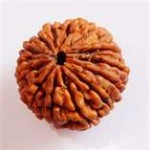The World of Spiritualism And Metaphysics
Welcome

Recent Posts
-

Virtues in Magickal : Super Cosmic Dragon Crown’s Pearl as Symbolized of Goddess Divine Energy & Personal Charm & Magnetism, Prosperity & Wealth, Support Business Progress & Sales Performance, Attracts Luck, Charismatic Personality, Power of Healing, Prosperous, Spiritual Manner Development, Spirituality & Strength, Miracle, Peaceful & Wards off Bad Spirits. The description of item as […]
-

Virtues in Magickal : Super Cosmic Dragon Pearl as Symbolized of Goddess Divine Energy & Miracle, Personal Charm & Magnetism, Prosperity & Wealth, Support Business Progress & Sales Performance, Attracts Luck, Prosperous, Spirituality & Strength, Miracle, Peaceful & Wards off Negative Energies. The description of item as below : * It comes with […]
-

Virtues in Magickal : Sea Dragon Pearl as Symbolized of Wisdom & Miracle, Prosperity & Attracts Luck, Leadership & Courage, Love & Sexuality, Support The Progress of Business, Physical Potential Development & Spirituality & Strength, Wards off Bad Spirits. The description of item as below : * It comes with unique spirits and spiritual intelligence. […]
-

Virtues in Magickal : Sky Kumala Dragon Crown’s Pearl as Symbolized Abundance of Sustenance, Prosperity & Wealth, Miracle & Occult Power, Leadership & Courage, Support The Progress of Business & Sales Performance, Power of Healing, Attracts Luck, Goddess Divine Energy & Great Empowerment, Enthusiasm & Passion, Spirituality & Strength, Wards off Bad Spirits. The description […]
-

Virtues in Magickal : King Kumala Dragon Horn’s Pearl as Symbolized Abundance of Sustenance, Prosperity & Wealth, Miracle & Occult Power, Leadership & Courage, Support The Progress of Business & Sales Performance, Power of Healing, Attracts Luck, Goddess Divine Energy, Enthusiasm & Passion, Strong Confidence, Love & Sexuality, Ritual Work & Spiritual Development & Strength, Wards […]
-

Virtues in Magickal : Mermaid Pearl as Symbolized The Appeal of Charm & Passion, Personal Magnetism, Captivating, Divine Gift & Miracle, Increase Motivation & Self Confident, Attract the Opposite Sex & Lover, Power of Healing, Prosperity & Wealth, Spirituality & Strength, Living Harmony & Peaceful, Social Life & Wards off Bad Spirits. The description of […]
-

Virtues in General : Akash Mani Sky Pearl as Symbolized Goddess of Energy & Wealth, Prosperity, Attracts Luck, Appeal of Charm, Divine Gift & Miracle, Living in Harmony, Strong Confidence, Love & Sexuality, Improves Business & Sales, Power of Healing & Wards off Bad Energies. The description of item as below : * It comes with […]
-

Virtues in Magickal : King Earth Dragon Oval Pearl as Symbolized of Great Empowerment & Miracle, The Appeal of Charm, Prosperity, Improves Business & Sales Performance, Self Confidence, Attracts Luck, Charismatic, Spiritual Development, Protection & Alignment, Wards off Bad Spirits. The description of item as below : * It comes with unique spirits and spiritual […]
-

Virtues in Magickal : Coconut Pearl as Symbolized of Attract Luck & Personal Happiness, Prosperity & Improves Business, The Appeal Of Charm, Attracting Lover & Sexuality, Living in Harmony, Attracts Sympathy & Social Life, Peacefulness, Spirituality & Strength,Wards off Bad Energies. The description of item as below : * It comes with unique spirits and […]
-

* Reference About Special Cloud Pearls from The Garuda Purana : ” Cloud Pearls “, which naturally emit glow like the sun, provide lighting in all directions and eliminate darkness on cloudy days. The source of light will be brighter than the combined moonlight, the sparkle of the stars in the sky. Cloud Pearls are […]
-

Virtues in General : Linga Yoni Pearl as Symbolized Attract The Opposite Sex & Miracle, Occult Power, The Appeal of Charm & Passion, Attracting Lover & Sexuality, Power of Healing, Living in Harmony, Prosperity, Increase Physical Appearance, Enthusiasm, Wards off Bad Spirits. The description of item as below : * It comes with unique spirits […]
-

Virtues in General : Linga Yoni Pearl as Symbolized Attract The Opposite Sex & Miracle, Occult Power, The Appeal of Charm & Passion, Attracting Lover & Sexuality, Power of Healing, Living in Harmony, Prosperity, Increase Physical Appearance, Enthusiasm, Wards off Bad Spirits. The description of item as below : * It comes with unique spirits […]
Random Items

Super Cosmic Dragon Crown’s Pearl MP – 0796
Virtues in Magickal : Super Cosmic Dragon Crown's Pearl as Symbolized of Goddess Divine Energy & … [Read More...]
The Blessing of Prosperity Power MPT – 01103
This talisman is powered and charged by the spirit intelligence of high level of expert … [Read More...]

Golden Dragon Ball Pearl Type WD MP – 0705
Virtues in Magickal : Golden Dragon Ball Pearl as Symbolized of Great Empowerment & Personal … [Read More...]

Yellow Snake Pearl AP – 0548
Virtues in General : Yellow Snake Pearl as Symbolized Personal Charm & Passion, Captivating, … [Read More...]

Bumblebee Honey Pearl MS – 0625
Virtues in General : Bumblebee Honey Pearl as Symbolized Attract The Opposite Sex, Personal Charm … [Read More...]
Copyright © 2009–2024 · Kingtalisman Universal on Kingtalisman.com - All right reserved · Log in















